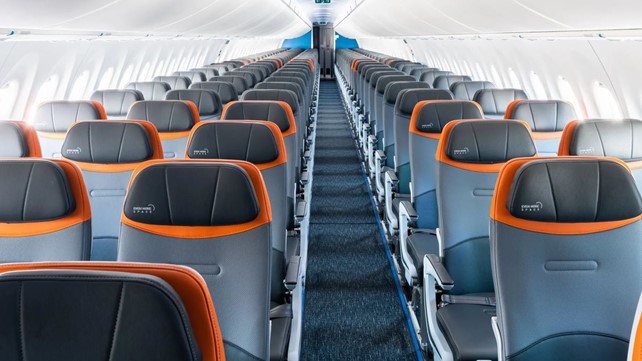The Federal Aviation Administration is calling for comments on airline seat sizes, which many argue aren’t inclusive to all body types.
Members of the general public will have 90 days to give feedback on the minimum seat dimensions necessary for passenger safety.
Some are using the survey to advocate for inclusive seating for all body types. The FAA specifically asked for feedback regarding how seat sizes impact disabled people’s safety, as well as people over age 60 and children. The mandate does not include passenger comfort.
The width of the average economy seat on major US airlines varies between 17 and 18.5 inches, with premium economy seats at a slightly more generous 18.5-19 inches.
Karlijn Burridge, a fellow with the Obesity Medicine Association, says her patients’ safety is affected by seat sizes.
“They report physical pain, severe bruising, and a fear of not fitting into a seat or being able to use the bathroom while on a flight,” Burridge said. “Many people will avoid flying all together, if they can help it, because of these issues.”
An FAA study released in January 2021 said even the most cramped seat designs have no impact on emergency evacuation. The average weight of a study participant was 88.5 kilograms, or around 195 pounds.
The issue of whether plus-sized people’s comfort impacts how safe they are in seats is unlikely to prompt FAA to enact changes.
“The FAA encourages commenters to review the cabin evacuations study, and provide information about the minimum dimensions of passenger seats that are necessary for safety,” a spokesperson said.
Flying has long been a point of stress for fat people, who are often made to navigate anti-fat bias in the process.
Paul Hudson, the president of the advocacy group FlyersRights.org, told USA Today the group estimates only 20% of travelers can comfortably fit in current seats.
Many airlines suggest customers purchase a second airplane seat for comfort, which is costly – the average price for a domestic airline ticket was $445 in April 2022.
“When it comes to plus size travelers and fat travelers, not only is it a comfort issue, it’s a safety issue,” said plus-size travel advocate and blogger Annette Richmond, who is hopeful that the FAA will listen to calls she and others have been making for years.
“It seems like maybe their time is finally up and it is time to start listening to the public and make the seats more accommodating to more people,” she said.
“Whatever measurements they have now, aren’t working for most of us.”
























